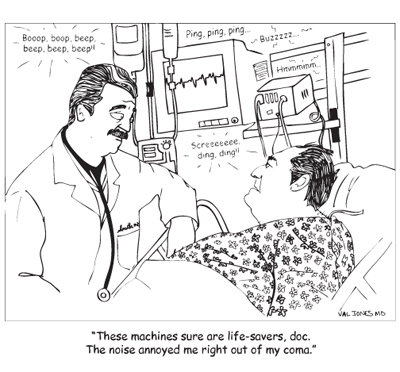September 19th, 2011 by Stanley Feld, M.D. in Health Policy, Opinion
No Comments »

As we get closer to January 2012, the originally scheduled implementation date for Accountable Care Organizations (ACOs), the time has come to reexamine the showpiece of President Obama’s Patient Protection and Affordable Care Act (PPACA) of 2010.
The final rules for ACO’s are now scheduled for release on January 2012. The implementation was originally scheduled for January 2012. As the original rules are being studied and interpreted the program for ACOs implementation became more confusing. Dr. Don Berwick (CMS Director) has refused to discuss the final rules until they have been published in the Federal Register.
“The ACO program is based on the hubristic assumption that the federal government can design the best organizational structure for the delivery of care, foster its development, and control its operation for the entire country.
The federal government has big-footed health system reform. Although there is no one right way to organize care, the federal government (Dr. Don Berwick and President Obama) thinks it has found one—and exerts top-down, bureaucratic control through PPACA to implement it.”
ACOs are supposed to be organizations that improve coordinated care. If an ACO decreases the cost of care Read more »
*This blog post was originally published at Repairing the Healthcare System*
May 11th, 2011 by Stanley Feld, M.D. in Health Policy, Opinion
No Comments »

In an ideal world ACOs should work. There is no evidence that untested and complex organizational structure of ACOs developed by Dr. Don Berwick (head of CMS) will improve quality of care and reduce costs.
ACOs are supposed to provide financial incentives to health care organizations to reduce costs and improve quality. There are too many defects in the ACOs infrastructure to improve the financial and medical outcomes.
At a conceptual level, the incentive for ACOs would be to increase efficiency and avoid overuse and duplication of services, resources, and facilities. In this model, ACO members would share the savings resulting from the increased coordination of care.
I have said over and over again that excessive administrative fees and ineffective management of chronic disease is the main source of waste in the healthcare system. ACOs do not deal with these main drivers of costs.
The only stakeholders who can demand that this waste be eliminated are consumers/patients. Patients must control their healthcare dollars. They will make sure there are competitive prices and will not permit duplication of services. Read more »
*This blog post was originally published at Repairing the Healthcare System*
March 10th, 2010 by EvanFalchukJD in Better Health Network, Health Policy, Opinion
No Comments »

Today the Commonwealth Fund came out with a chart that it says is a “grim reminder” of what happens when health care doesn’t get reformed.
If only we had listened to Richard Nixon or Jimmy Carter. We would have saved tens of trillions of dollars in health care spending.

Click to enlarge Read more »
*This blog post was originally published at See First Blog*
January 18th, 2010 by EvanFalchukJD in Better Health Network, Health Policy, Opinion
1 Comment »

“We can no longer afford an overall health care system in which the thought is more is always better, because it’s not.” – Peter Orszag
Could anyone disagree? Not really. Which ought to be the first clue that it’s a meaningless truism. I mean, of course more isn’t always better.
But this hasn’t stopped this truism from becoming one of the most popular refrains in health care reform. Most of the time this is directed at one area: end-of-life care. Read more »
*This blog post was originally published at See First Blog*
July 3rd, 2009 by admin in Better Health Network, Health Policy, Opinion
No Comments »
[This post was written by Charlie Baker, President and CEO of Harvard Pilgrim Health Care, Inc., one of New England’s leading non-profit health plans.]
I heard this idea promoted at a luncheon I was at last week — that the best way to fix health care in the U.S. would be to move to a “Medicare-For-All” system. Needless to say, I find this odd — since I think many of the things people hate most about our existing system — too procedure driven, doesn’t support primary care and prevention, favors technology over face-to-face interaction, doesn’t support multi-disciplinary approaches to care delivery, etc. — derive from the rules of the game set up and enforced by…Medicare!!! Yikes!
But aside from that, the two things I always hear about why it’s a good idea are — Medicare has lower Administrative costs than private health plans and they’re a ”better” payer than the private plans. Hmmm…Let’s take the first one. What I’ve heard before is that Medicare only spends 4% of its money on a per beneficiary basis on administration, while the plans spend 14% per member on administration — a big difference. This is interesting, but misleading.
Medicare beneficiaries are over the age of 65. They spend almost three times as much money on health care as a typical private plan member — most of whom are under the age of 65. If the Medicare member typically spends $800 per month on health care, and 4% of that is spent on administration, that’s $32 a month on administration. If the private health plan member typically spends $300 per month on health care, and 14% of that is spent on administration, that’s $42 a month — a much smaller difference. But we’re not done yet. Medicare is part of the federal government, so its capital costs (buildings, IT, etc.) and benefit costs (health insurance for its employees and retirees (!), pension benefits, etc.) are funded somewhere else in the federal budget, not in the Medicare administrative budget.
Private plans have to pay for these items themselves. That’s worth about $5-6 per member per month, and needs to come out of the health plan number for a fair comparison. Now we’re almost even. And finally, Medicare doesn’t actually process and pay claims for all of its beneficiaries. It contracts with health plans around the country to do much of this for them. That’s not in their administrative number, either — and it is, needless to say, in the private health plan number.
People push and pull these numbers all the time, and there may be “some” difference between Medicare and the private health plans on administrative spending as a percent of total spending. But it’s not huge, if you try to compare apples to apples.
On the payment issue, the numbers I’ve seen suggest that nationwide, private plans — on average — pay somewhere between 120 and 125 percent of what Medicare pays for hospital and physician services. In other words, private plans pay MORE than Medicare pays, not less! If people want Medicare For All, they need to be prepared to either dramatically raise Medicare rates and payment — and therefore, Medicare costs — by a lot of money — 20 to 25% by this estimate — or kick the bejeebers out of the physician and hospital communities and make them eat the difference.
Medicare-For-All is not as simple as it seems.
*This blog post was originally featured at the Let’s Talk Healthcare blog.*













